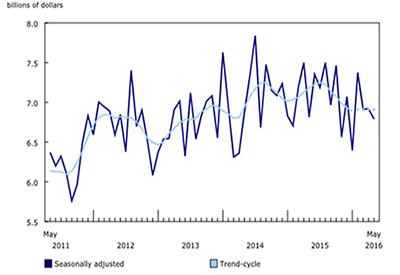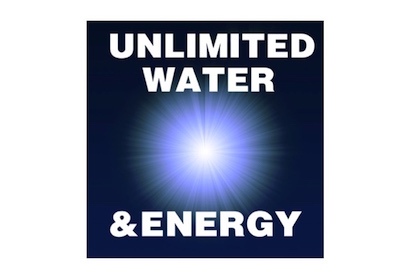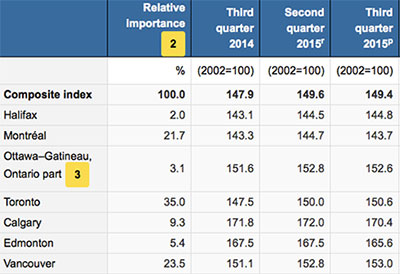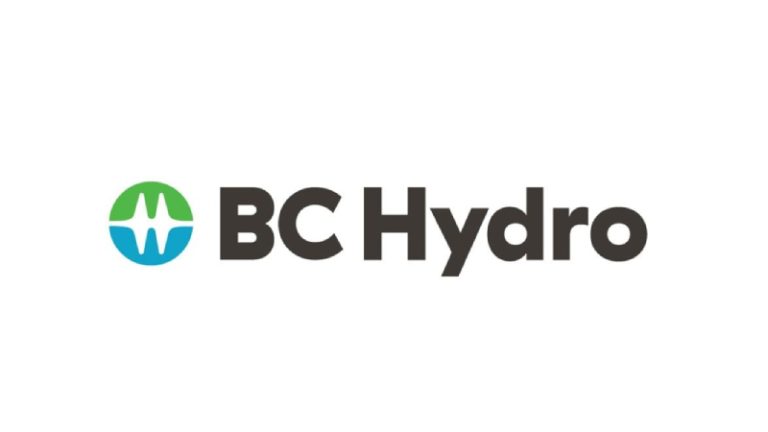Guide to the Canadian Electrical Code, Part I — Instalment 52

Sept 8, 2019
By William (Bill) Burr
This discussion of Appendix J -Annex J20 is based on the 24th edition. The Code is a comprehensive document. Sometimes it can seem quite daunting to quickly find the information you need. This series of articles provides a guide to help users find their way through this critical document. This is not intended to replace the notes in Appendix B or the explanations of individual requirements contained in the CEC Handbook** but will hopefully provide some help in navigating, while reading the code. The 24th Edition of the CE-C, Part I, (C22.1-18)* is now available from CSA Group.
Due to the size of this Annex, it is discussed in multiple parts. This is Part B-Bulk Storage Plants, Finishing Processes and Aircraft Hangars
Bulk storage plants
Rule J20-200 notes that Rules J20-202 to J20-212 apply to locations where gasoline or other similar volatile flammable liquids are stored in tanks with an aggregate capacity of one carload or more, and are dispensed.
Rule J20-202 outlines the extent of hazardous areas at bulk storage tank locations and references Table JT-69.
Rule J20-204 specifies that all electrical wiring and equipment in the hazardous areas as defined in J20-202 conform to the requirement in Annex J18.
Rule J20-206 outlines that for wiring and equipment installed above the hazardous areas as defined above that
• Wiring meet the requirements of Section 12,
• Fixed equipment that may produce arcs, sparks or hot metal particles like lamps, lamp holders, cut-outs, switches, receptacles, motors, or other make-and-break or sliding contacts be totally enclosed type to prevent the escape of sparks, and
• Portable lamps or equipment and flexible cords meet the requirements of Annex J18
Rule J20-208 notes that seals are required to be installed in accordance with Annex J18, observing both horizontal as well as vertical boundaries and include buried raceways under the defined hazardous areas.
Rule J20-210 requires that the provisions of Rule J20-002 to J20-014 – Gasoline dispensing and Service Stations – be applied where gasoline dispensing is carried out with bulk station operations.
Rule J20-212 reiterates that all non-current carrying metal parts of equipment and raceways be bonded to ground in accordance with Section 10.
Finishing processes
Rule J20-300 notes that Rules J20-302 to J20-314 apply to locations where paints and other flammable finishes, solvents or thinners are regularly applied by spraying, dipping or brushing.
Rule J20-302 outlines the hazardous areas in finishing process locations:
• Class I, Division 1 locations:
◦ interior of spray booths and exhaust ducts
◦ all space within 6 m horizontally in any direction up to 1m above the goods to be painted as per Diagram JD-5
◦ all space within 6 m horizontally in any direction from dip tanks and drain boards
◦ all other spaces where hazardous concentrations of flammable vapours may likely occur
• Class 1, Division 2 locations:
◦ extending not less than 1.5 m from an open-face spray booth or room as shown in Diagram JD-4
◦ the space within 1 m in all directions from any openings in a booth or room where flammable vapours are likely to occur as a result of paint mixing as shown in Diagram JD-10
◦ all space beyond the limits of the Class I, Division 1 as described above as per Diagram JD-5
◦ where a Class I, Division 1 Location has adequate mechanical ventilation with effective interlocks provided at floor level as per Diagram JD-6, all space between 1 m and 1.5 m distance and within 6 m horizontally in any direction beyond the Class I, Division 1 area
• Non-hazardous locations:
◦ adjacent area that are cut off from the defined hazardous areas by partitions without any openings and where flammable vapours are not likely to be released
◦ drying and baking areas provided with positive mechanical ventilation and with effective interlocks to de-energize all electrical equipment not meeting the requirements for the classified area in case the ventilating equipment is inoperative
◦ the space behind a baffle of not less than No.18 MSG sheet metal installed vertically above the front face of an open-face spray booth or room to a height of 1 m or to the ceiling and extends a distance of 1 m beyond each side opening
Rule J20-304 requires that the spraying equipment for a spray booth be made inoperable by an interlock with the ventilation system when the ventilation system is not operating.
Rule J20-306 outlines the requirements for wiring and equipment installed within the hazardous areas defined by Rule J20-302 as follows:
• all electrical wiring and equipment to be installed in compliance with Annex J18
• no electrical equipment or wiring be installed or used where ignitable deposits or residue may accumulate
• where illumination is provided through panels of glass, transparent or translucent materials, only fixed lighting units, non-combustible panels protected against breakage, isolated from the hazardous area and arranged so that accumulations of hazardous residue will not raise temperatures by radiation or conduction, may be used
• portable electric lamps or equipment not be used during operation of finishing processes and also meet requirements for the classified area during cleaning or repairing operations
• where positive mechanical ventilation is provided, totally enclosed and gasketted, lighting may be used on the ceiling of a spray room
• where infrared paint drying units are used in a spray room, the controls must be interlocked with the spraying equipment so that both operations cannot occur simultaneously and portable units may only be used after spraying operations have ceased
Rule J20-308 requires that fixed electrostatic spraying and detearing equipment installed in hazardous areas, as defined in Rule J20-302, meet the requirements of the classified area, and conform to the following:
• no transformers, power packs, control apparatus, or other electrical portions of the equipment except high-voltage grids and their connections may be installed in any of the hazardous areas defined in Rule J20-302, unless they meet the requirements for the classified area
• high-voltage grids or electrodes must be located in non-combustible booths or enclosures with adequate mechanical ventilation, of rigidly supported substantial construction, and effectively insulated from ground by means of nonporous, non-combustible insulators
• high-voltage leads must be supported on permanent insulators, guarded against accidental contact or grounding, and provided with automatic means for discharging any residual charge to ground when the supply voltage is interrupted
• goods being processed must be supported on conveyors so that the minimum clearance from high-voltage grids or conductors must be at least twice the sparking distance, indicated by a permanently posted sign near the equipment
• automatic controls be provided to disconnect the power supply without time delay to disconnect the power supply and to signal the operator in case of
◦ stoppage of ventilating fans
◦ failure of ventilating equipment
◦ stoppage of the conveyor carrying goods through the high-voltage field
◦ occurrence of a ground at any point on the high-voltage system, or
◦ reduction of clearance of the sparking distance, and
• Electrically conducting and bonded-to-ground fencing, railings, or guards that are provided for safe isolation of the process, and permanent signs posted, warning of dangerous high voltage.
Rule J20-310 requires that electrostatic hand spraying apparatus and devices used in hazardous areas, as defined in Rule J20-302, meet the requirements of the classified area, and conform to the following:
• high-voltage circuits be intrinsically safe and not produce a spark sufficient to ignite any vapour-air mixtures, nor result in a shock hazard upon coming in contact with a grounded object
• the electrostatically charged elements of the hand-gun be capable of being energized only by a switch that also controls the paint supply
• transformers, power packs, control apparatus, and all other electrical portions of the equipment, with the exception of the hand gun itself and its connections to the power supply, be located outside the hazardous area
• the handle of the spray gun be bonded-to-ground by a metallic connection and be constructed, so that the operator is in intimate electrical contact with the handle, in order to prevent buildup of a static charge on the operator’s body
• all conductive objects in the spraying area shall be bonded-to-ground and the equipment shall carry a permanent warning sign regarding the necessity for this bonding feature
• precautions shall be taken to ensure that objects being painted are maintained in metallic contact with the conveyor or other grounded support, and include the following:
◦ hooks be regularly cleaned
◦ areas of contact be sharp points or knife edges
◦ points of support of the object be concealed from random spray and where objects being sprayed are supported from a conveyor, the point of attachment to the conveyor be located to prevent collection of spray material during normal operation, and
• the spraying operation take place within a spray area that is ventilated to remove solvent vapours released from the operation, and the electrical equipment be interlocked with the ventilation of the spraying area preventing the equipment from operating unless the ventilation system is in operation.
Rule J20-312 outlines that for wiring and equipment installed above the hazardous areas, as defined in Rule J20-302 above, that
• wiring meet the requirements of Section 12
• fixed equipment that may produce arcs, sparks or hot metal particles like lamps, lamp holders, cut-outs, switches, receptacles, motors, or other make-and-break or sliding contacts be totally enclosed type to prevent the escape of sparks
Rule J20-314 reiterates that all non-current carrying metal parts of equipment and raceways, regardless of voltage, be bonded to ground in accordance with Section 10.
Aircraft hangars
Rule J20-400 notes that Rules J20-402 to J20-442 apply to locations used for storage or servicing of aircraft where gasoline, jet fuels, or other volatile flammable liquids, or gases, are used, except for locations where drained and purged aircraft are stored.
Rule J20-402 outlines the hazardous areas in aircraft hangars:
• Class I, Division 1 locations:
◦ any pit or depression below the level of the hangar floor extending up to the floor level
• Class 1, Division 2 locations:
◦ the entire area of the hangar, including any adjacent and communicating areas not suitably cut off from the hangar, up to a level 450 mm above the floor
◦ the area within 1.5 m horizontally from aircraft power plants, aircraft fuel tanks, or aircraft structures containing fuel extending upward from the floor to a level 1.5 m above the upper surface of wings and engine enclosures
• Non-hazardous locations:
◦ adjacent areas in which hazardous vapours are not likely to be released, such as stock rooms, electrical control rooms, and other similar locations, when adequately ventilated and when effectively cut off from the hangar itself in accordance with Rule J18-058
Rule J20-404 specifies that all electrical wiring and equipment in the hazardous areas as defined in J20-402 conform to the requirement in Annex J18 and in addition
• all wiring installed in or under the hangar floor conform to the requirements for Class I, Division 1 locations
• wiring systems installed in pits, or other spaces in or under the hangar floor, be provided with adequate drainage, not be placed in the same compartment with any other service, except piped compressed air
• attachment plugs and receptacles in hazardous locations be explosion-proof or be designed to be de-energized while the connections are being made or broken
Rule J20-406 specifies that all electrical wiring not within the hazardous areas as defined in J20-402 be installed in metal raceways or shall be armoured cable, Type MI cable, aluminum-sheathed cable, or copper sheathed cable, except that wiring in a non-hazardous location as set out in Rule J20-402 may be any type recognized in Section 12 as suitable for the type of building and the occupancy, and in addition:
• flexible cord of the hard-usage type and containing a separate bonding conductor be used for portable utilization equipment, lamps, and pendants
• continuity and adequacy of the bonding between the fixed wiring system and the non-current-carrying metal portions of pendant luminaires, portable lamps, and other portable utilization equipment must be maintained
Rule J20-408 specifies that equipment not within the hazardous areas
• equipment that is less than 3 m above wings and engine enclosures of aircraft, except equipment in areas described in Rule J20-402, that may produce arcs, sparks, or particles of hot metal, be of a totally enclosed type or constructed to prevent the escape of sparks
• lampholders of metal shell, fibre-lined types not be used for fixed lighting
• portable lamps that are used within a hangar shall comply with Rule J18-118
• portable utilization equipment used within a hangar be a type suitable for use in Class I, Division 2 locations
Rule J20-410 requires that
• electric wiring, outlets, and equipment, including lamps on, or attached to, stanchions, rostrums, or docks located, in a hazardous area, as defined in Rule J20-402, conform to the requirements for Class I, Division 2 locations;
• wiring and equipment installed on stanchions, rostrums, and docks, not located in a hazardous area as defined in Rule J20-402, shall conform to Rules J20-406 and J20-408, except for the following:
◦ receptacles and attachment plugs shall be of the locking type that will not break apart readily
◦ wiring and equipment not more than 450 mm above the floor in any position meet the requirements for a Class I, Division 2 classification
• mobile stanchions with electrical equipment not located in a hazardous area carry at least one permanently affixed warning sign stating that stanchions are to be kept 1.5 m clear of aircraft engines and fuel tank areas
Rule J20-412 notes that seals are required to be installed in accordance with Annex J18, observing both horizontal as well as vertical boundaries and include buried raceways under the defined hazardous areas.
Rule J20-414 requires that aircraft electrical systems be de-energized when the aircraft is stored in a hangar and while the aircraft is undergoing maintenance.
Rule J20-416 specifies that
• aircraft batteries not be charged when installed in an aircraft located inside or partially inside a hangar
• battery chargers and control equipment not be located or operated within hazardous areas defined in Rule J20-402, except where located in a separate building or area classed as non-hazardous in accordance with Rule J20-402
• mobile chargers carry at least one permanently affixed warning sign stating that the chargers must be kept 1.5 m clear of aircraft engines and fuel tank areas
• tables, racks, trays, and wiring not be located within a hazardous area and conform to the provisions of Section 26 pertaining to storage batteries
Rule J20-418 requires that
• aircraft energizers be designed and mounted so that all electrical equipment and fixed wiring will be at least 450 mm above floor level and not operated in a hazardous area as defined in Rule J20-402
• mobile energizers carry at least one permanently affixed sign stating that the energizer be kept 1.5 m clear of aircraft engines and fuel tank areas
• aircraft energizers be equipped with polarized external power plugs and automatic controls to isolate the ground power unit electrically from the aircraft, in case excessive voltage is generated by the ground power unit
• flexible cords for aircraft energizers and ground support equipment be of the extra-hard- usage type and include a bonding conductor
Rule J20-420 specifies that
• mobile servicing equipment, such as vacuum cleaners, air compressors, and air movers, etc., having electrical wiring and equipment not suitable for Class I, Division 2 locations be designed and mounted so that all such wiring and equipment will be at least 450 mm above the floor, not be operated within the hazardous areas defined in Rule J20-402, and carry at least one permanently affixed warning sign stating that the equipment be kept 1.5 m clear of aircraft engines and fuel tank areas
• flexible cords used for mobile equipment be of the extra-hard-usage type and l include a bonding conductor
• attachment plugs and receptacles provide for the connection of the bonding conductor to the raceway system
• equipment not be operated in areas where maintenance operations likely to release hazardous vapours are in progress, unless the equipment is at least suitable for use in a Class I, Division 2 location
Rule J20-422 reiterates that all metal raceways and all non-current-carrying metal portions of fixed or portable equipment, regardless of voltage, be bonded to ground in accordance with Section 10.
* The source for this series of articles is the Canadian Electrical Code, Part I, (C22.1-18) published by CSA.
** Note the CEC Handbook is also published by CSA.
William (Bill) Burr is the former Chair of the Canadian Advisory Council on Electrical Safety (CACES), former Director of Electrical and Elevator Safety for the Province of BC, and former Director of Electrical and Gas Standards Development and former Director of Conformity Assessment at CSA Group. Bill can be reached at Burr and Associates Consulting billburr@gmail.com.

















